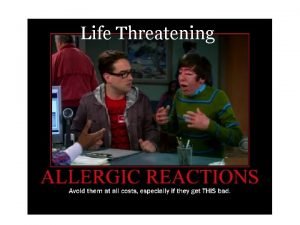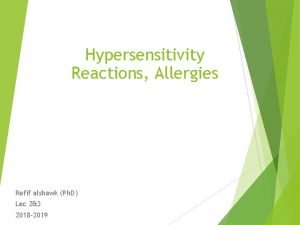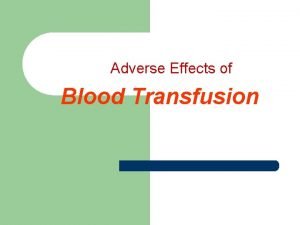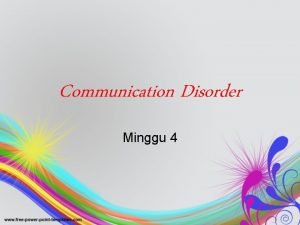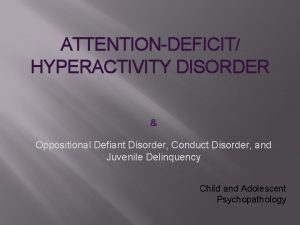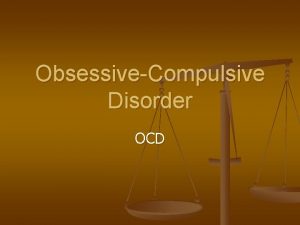Original model Disorder to allergic reaction Allergic state





- Slides: 5

Original model • Disorder to allergic reaction • Allergic state • Allergic reaction

Current model • Hypersensitivity condition • Allergic condition • Allergic disposition • Allergic reaction • Allergic diseases which can be interpreted as dispositions or reactions • Pseudoallergic condition • Allergic disposition • Allergic reaction • Allergic diseases which can be interpreted as dispositions or reactions • Hypersensitivity/Allergy/Pseudoallergy condition fully defined with pathological process = Hypersitivity process /Allergic process/Pseudoallergic process • Allergic disposition to substance defined with role group after allergic sensitization + causative agent substance

Proposed model • Hypersensitivity/Allergy/Pseudoallergy condition changed to primitive by removing pathological process relationship • Condition class remains as parent of allergic diseases, dispositions and processes (reactions) • Condition and disposition classes moved from under disorders to clinical findings • Allergic diseases defined as due to allergic reactions • Allergic/pseudoallergic dispositions defined with role group has realization allergic/pseudoallergic process + causative agent substance • Add new pathological process abnormal immune response (qualifier value) as a parent of allergic process (qualifier value) and autoimmune (qualifier value) and use to redefine 414029004 |Disorder of immune function (disorder)| • Add Intolerance to substance under Hypersensitivity disposition? • Change all references to pseudoallergy to nonallergic hypersensitivity

Why changes are critical • The current model has several shortcomings: • Hypersensitivity condition and its immediate descendants represent a disjunction between dispositions, processes and diseases which themselves are disjunctions between dispositions and processes. As such, they should not be fully defined. • Defining Hypersensitivity condition and its immediate descendants with a pathological process results in the pathological process being inherited by the disposition class. Pathological processes are not dispositions but rather the realization of dispositions. • Defining allergy disposition using a role group containing after allergic sensitization + causative agent requires a different and imperfect model to be applied to defining nonallergic hypersensitivity (pseudoallergy) • The WAO/EAAAI nomenclature as well as the allergy, hypersensitivity, intolerance CRG feels that “pseudoallergy” is an obsolete term. • Redefining Disorder of immune function (disorder) as discussed above will enable allergic diseases and reactions as well as autoimmune diseases to correctly classify as disorders of immune function

Impact to terminology • Changes to the modeling of hypersensitivity conditions • These are top level classes and will be restricted to only 3 subclasses: diseases, dispositions and reactions (processes). • These changes should not appreciably affect the current terminology • Changes to modeling of hypersensitivity dispositions • The changes provide a consistent model for both allergic and nonallergic hypersensitivity. • These hierarchies will still be able to be queried by causative agent. • Change of Pseudoallergy to Nonallergic hypersensitivity • TBD • Redefining Disorder of immune function will result in moving autoimmune and allergic disorders under a more appropriate grouper. • Moving condition and disposition classes under clinical finding • TBD
